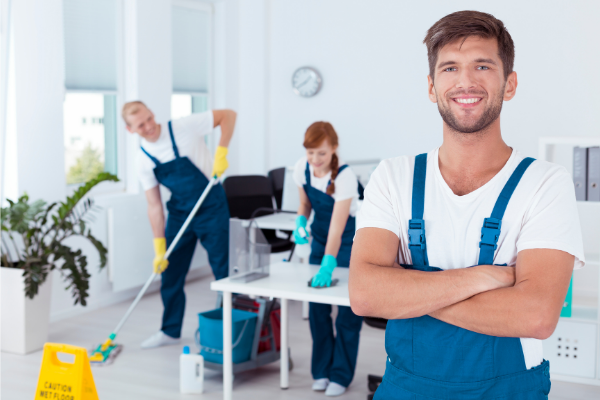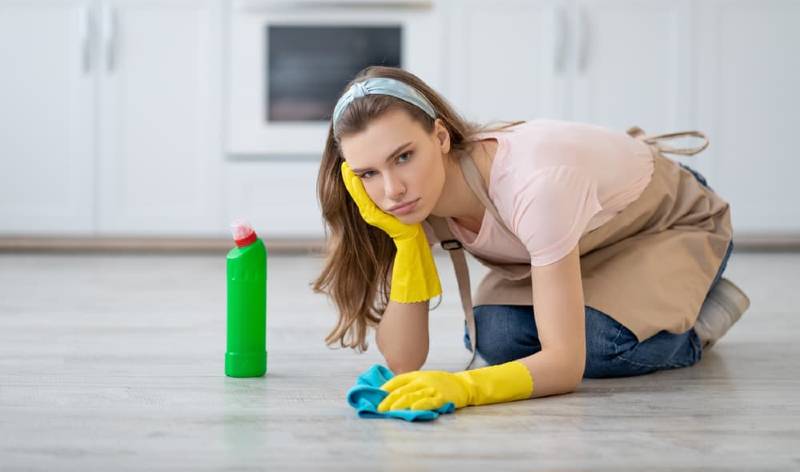Comprehensive Everyday Cleaning Tips: From Defrosted and Cleaned Every Few Months to Removing Clutter
Comprehensive Everyday Cleaning Tips: From Defrosted and Cleaned Every Few Months to Removing Clutter
Blog Article
Recognizing the Requirement for Extensively Sanitizing and Sanitizing Frequently Touched Surface Areas in High-Traffic Areas
In the realm of public health and safety and security, the precise sanitation and sanitization of regularly touched surface areas in high-traffic areas stand as vital actions in protecting against the spread of hazardous virus. By discovering the various facets of surface area sanitation, from the threats connected with neglecting cleaning protocols to the efficient techniques that can be employed, a more clear understanding arises of the essential function these techniques play in protecting public health and wellness.
Value of Surface Area Disinfection
Highlighting the thorough disinfection of high-traffic surfaces is critical in maintaining a hygienic environment and preventing the spread of damaging pathogens. High-touch surfaces such as door manages, light switches, lift buttons, and counter tops serve as breeding grounds for infections and bacteria. Regular sanitation of these surfaces is vital to reduce the risk of contamination and transmission of illnesses.
By applying a robust sanitation protocol, organizations and businesses can develop a much safer environment for visitors, staff members, and clients. Correct surface area sanitation not just reduces the spread of contagious conditions yet additionally instills self-confidence in the cleanliness and security of the premises. This positive method demonstrates a dedication to health and health, which is especially essential in high-traffic areas where the likelihood of direct exposure to pathogens is heightened.
Additionally, surface area sanitation plays an essential function in total infection control approaches. Integrated with hand hygiene methods, using masks, and preserving physical distancing, complete sanitation of high-touch surfaces creates an extensive protection against the transmission of dangerous microbes. Focusing on surface area disinfection is an essential component of an all natural approach to wellness and security in common rooms.
Dangers of Neglecting Cleansing Practices
Overlooking comprehensive disinfection of high-traffic surfaces considerably increases the danger of bacterial and viral contamination, presenting a severe danger to the wellness and safety of people frequenting these spaces. Failure to carry out correct cleansing techniques can cause the accumulation and spread of dangerous microorganisms, including infections and germs, on often touched surface areas such as doorknobs, handrails, lift buttons, and countertops.

Furthermore, disregarding the value of extensive cleansing not only compromises the well-being of individuals but additionally threatens initiatives to maintain a clean and hygienic atmosphere. It is essential to recognize the significance of appropriate disinfection methods in avoiding the spread of infections and protecting public wellness.
Effective Disinfection Approaches
To keep ideal cleanliness and lower the danger of contamination on high-traffic surfaces, using effective disinfection techniques is necessary. Among one of the most common and efficient disinfection techniques is using chemical disinfectants. These items can vary in strength and composition, with some targeting particular pathogens like viruses or bacteria. It is essential to adhere to the manufacturer's directions for proper dilution, call time, and air flow when utilizing chemical anti-bacterials to ensure their performance - Vacuum Carpets.
Another effective approach is making use of UV-C light. UV-C light has actually been revealed to be efficient in killing a wide range of microorganisms by interrupting their DNA structure, hence preventing them from duplicating. It is essential to utilize UV-C light appropriately, ensuring that the proper intensity and direct exposure time are used to attain the desired sanitation results.
Furthermore, utilizing vapor cleaning as a disinfection method can be very reliable, especially on surface areas that are heat-resistant. Vapor can permeate porous surface areas and kill germs, infections, and various other microorganisms effectively. When using vapor cleaning, it is essential to make sure that the surface area gets to the called for temperature for a sufficient quantity of time to ensure correct sanitation.
Impact on Public Health And Wellness
The maintenance of high standards of cleanliness and sanitation on high-traffic surfaces plays an essential duty in securing public health and wellness. Regularly touched surfaces in areas with high footfall, such as doorknobs, hand rails, elevator buttons, and restroom facilities, offer as reproducing grounds for hazardous microorganisms. Falling short to effectively disinfect these surface areas can cause the fast spread of infectious diseases within areas. By applying comprehensive sanitation methods, the danger of transmission of viruses, microorganisms, and other bacteria can be considerably lowered.
Effective cleanliness practices not just secure people from falling ill however also add to the overall health of society. Public health and wellness authorities emphasize the significance of preserving clean environments to stop break outs and consist of the spread of illnesses. In high-traffic areas like flight terminals, schools, hospitals, and mass transit systems, the influence of rigorous sanitation measures can not be underrated. Prioritizing the sanitization of regularly touched surface areas is a proactive strategy to advertising public wellness and boosting the safety and security of people in common areas.
Executing Normal Cleansing Protocols
Quickly setting up and adhering to a consistent timetable of cleaning procedures is extremely important for maintaining the cleanliness and security of high-traffic surfaces. Regular cleansing procedures are necessary in avoiding the build-up of germs and virus on often touched surfaces, especially in Scrub the Surfaces locations with high foot traffic. By carrying out a methodical approach to cleansing, organizations can properly minimize the danger of illness transmission and produce a healthier environment for workers, customers, read this article and the public.
To establish an effective cleansing timetable, it is critical to identify high-traffic areas that call for constant focus. These areas might include doorknobs, handrails, lift buttons, bathroom facilities, and shared equipment. Executing a regular cleansing program that targets these surfaces several times a day can significantly minimize the spread of unsafe germs and viruses.
Additionally, making use of appropriate cleaner and anti-bacterials is vital to ensuring that surface areas are completely sanitized. Regular training of cleaning staff on appropriate cleaning methods and the importance of adherence to the cleansing schedule is likewise vital in maintaining a sanitary atmosphere. By focusing on regular cleaning protocols, companies can advertise the health and health of people who connect with these high-traffic surfaces.

Final Thought
Finally, it is essential to prioritize complete sanitation and sanitization of often touched surfaces in high-traffic areas to stop the spread of unsafe virus and keep public health. Disregarding appropriate cleaning methods can boost the danger of contamination and transmission of conditions. By implementing regular cleaning protocols and using efficient sanitation approaches, we can develop a safer setting for every person (Clear Out Any Clutter). It is vital to identify the value of maintaining tidy surface areas in high-traffic locations to guarantee the health of the area.
In the world of public health and security, the careful disinfection and sanitization of frequently touched surface areas in high-traffic locations stand as extremely important measures in stopping the spread of dangerous virus. By checking out the various facets of surface area sanitation, from the dangers connected with this contact form ignoring cleansing procedures to the efficient approaches that can be utilized, a clearer understanding emerges of the crucial function these methods play in safeguarding public health and wellness.Furthermore, employing heavy steam cleaning as a sanitation technique can be extremely reliable, especially on surfaces that are heat-resistant. When making use of steam cleaning, it is crucial to guarantee that the surface area reaches the called for temperature level for an enough amount of time to guarantee correct disinfection.
In conclusion, it is crucial to focus on extensive disinfection and sanitization of frequently touched surfaces in high-traffic areas to prevent the spread of harmful microorganisms and maintain public wellness.
Report this page